Beef tripe, also known as offal, is a cut of meat that comes from the stomach lining of farm animals. It is commonly used in traditional cuisines around the world, including Asian, African, European, and American. Tripe is most commonly eaten in dishes like soups, stews, sauced foods, and sausages. It is a good source of protein and essential nutrients, including selenium. Tripe offers potential health benefits such as supporting bone and muscle health and preventing anemia. However, it should be consumed in moderation due to its high cholesterol content.
Key Takeaways:
- Beef tripe is the stomach lining of cows and is commonly used in various cuisines.
- It is a good source of protein and essential nutrients.
- Beef tripe offers potential health benefits including bone and muscle health.
- It should be consumed in moderation due to its high cholesterol content.
- Beef tripe can be cooked in various ways and incorporated into different dishes.
What is Beef Tripe?
Beef tripe, derived from the stomach lining of cows, is a unique meat that adds a distinctive taste and texture to various dishes. There are four main types of beef tripe: honeycomb, pocket, flat, and rolled. However, the honeycomb tripe stands out as the most sought-after variety due to its delicate texture and attractive appearance.
Beef tripe has a chewy texture and a mild flavor, making it a versatile ingredient in the culinary world. When cooked with onions, garlic, and spices, it can be enhanced to create a delightful and flavorful experience. Tripe is commonly featured in dishes like soups, stews, and sausages, adding depth and richness to these meals.
| Type of Beef Tripe | Description |
|---|---|
| Honeycomb Tripe | The most popular variety with delicate texture and appearance |
| Pocket Tripe | Characterized by its pocket-like structure |
| Flat Tripe | Wide and flat in shape, commonly used in dishes that require rolling or stuffing |
| Roll Tripe | Long, rolled pieces that are often secured with butcher’s twine |
“Beef tripe, with its unique texture and mild flavor, is a versatile ingredient that can elevate various dishes to a whole new level of taste and culinary experience.”
Whether you’re exploring international cuisines or experimenting in your own kitchen, beef tripe offers a world of gastronomic possibilities. Its ability to absorb and complement the flavors of other ingredients makes it a favorite among adventurous and seasoned cooks alike.
Health Benefits of Beef Tripe
Beef tripe is not only a culinary delight but also a powerhouse of nutrients that contribute to overall health and well-being. Packed with protein, vitamin B12, iron, and calcium, beef tripe offers numerous health benefits that make it a valuable addition to your diet.
Protein for Tissue Repair and Growth
One of the key benefits of beef tripe lies in its high protein content. Protein is essential for tissue repair, muscle growth, and the production of enzymes and hormones. Including beef tripe in your meals can provide a significant protein boost, helping to support the body’s needs for building and repairing tissues.
Vitamin B12 and Iron for Red Blood Cell Production
Beef tripe is rich in vitamin B12 and iron, two vital nutrients that play a crucial role in red blood cell production and the prevention of anemia. Vitamin B12 helps maintain healthy nerve function and aids in the production of DNA, while iron is necessary for oxygen transport in the blood. Consuming beef tripe can help ensure a healthy supply of these nutrients, promoting optimal blood health and overall vitality.
Calcium for Strong Bones
In addition to protein, vitamin B12, and iron, beef tripe is also a good source of calcium. Calcium is essential for building and maintaining strong bones and teeth. Including beef tripe in your diet can help support bone health, especially when combined with other calcium-rich foods.
Immune Support and Wound Healing
Beef tripe contains a variety of other essential nutrients, including zinc and antioxidants, which help support a healthy immune response. These nutrients play a role in maintaining the body’s defense mechanisms and promoting efficient wound healing.
Gut Health and Probiotics
Another noteworthy benefit of beef tripe is its rich probiotic content, which contributes to improved gut health. Probiotics are beneficial bacteria that help maintain a healthy balance in the digestive system, aiding in digestion and nutrient absorption. This can lead to better overall gut health and improved digestion.
To summarize, beef tripe offers a range of health benefits, including protein for tissue repair and growth, vitamin B12 and iron for red blood cell production, calcium for strong bones, immune support and wound healing, and improved gut health through probiotics. By incorporating beef tripe into your diet, you can enhance your overall nutritional intake and support your body’s health and well-being.

How to Clean and Cook Beef Tripe
When it comes to preparing beef tripe, proper cleaning and cooking techniques are essential to ensure a delicious and safe dining experience. Follow these steps to clean and cook beef tripe:
- Clean the beef tripe: Start by rinsing the beef tripe thoroughly with cold water to remove any debris or residue. Then, soak it in a mixture of water and vinegar for 30 minutes. This helps to eliminate bacteria and reduce any strong odors.
- Remove excess fat: Trim off any excess fat or gristle from the beef tripe. This will help improve the texture and taste of the final dish.
- Simmer the beef tripe: Place the cleaned beef tripe in a large pot and cover it with water. Bring the water to a boil, then reduce the heat to low and simmer the tripe for 2-3 hours. The tripe should become tender and easy to chew.
- Add flavorings: Enhance the flavor of the beef tripe by adding onions, garlic, spices, and other seasonings to the simmering pot. This will infuse the tripe with delicious aromas and tastes.
- Use in various dishes: Cooked beef tripe can be incorporated into a wide range of dishes. It adds a unique texture and taste to recipes like eggs, salads, soups, stews, and pasta dishes.
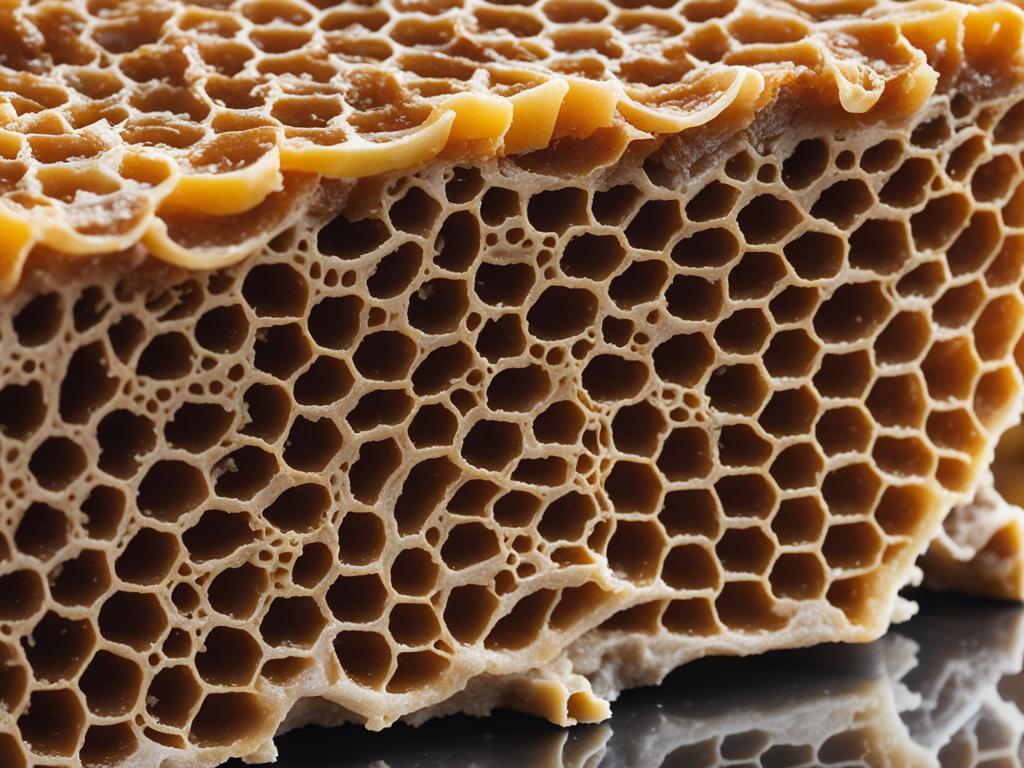
With these simple steps, you can confidently clean and cook beef tripe, turning it into a flavorful and satisfying ingredient for your culinary creations.
Beef Tripe Recipes
Beef tripe is an incredibly versatile ingredient that can be used to create a variety of delicious dishes. Whether you’re a fan of classic comfort foods or love experimenting with international flavors, there’s a beef tripe recipe that will suit your taste buds. Here are some popular recipes that feature beef tripe as the star:
Mexican Menudo
One iconic dish in Mexican cuisine that features beef tripe is Menudo. This hearty soup combines tender beef tripe with flavorful spices, herbs, hominy, and chili peppers. It is often served with chopped onions, cilantro, and a squeeze of lime for added freshness.
Tripe Soup
Tripe soup is a comforting dish made by simmering beef tripe with aromatic vegetables, such as carrots, celery, and onions. The soup is typically seasoned with herbs and spices, like bay leaves, thyme, and peppercorns, to enhance the flavor. It’s a hearty and nourishing meal that is perfect for cold winter days.
Tripe Stew
A delicious and filling dish, tripe stew combines beef tripe with a rich tomato-based sauce and a medley of vegetables, such as potatoes, carrots, and bell peppers. The flavors meld together as it cooks low and slow, resulting in a tender and flavorful stew that’s perfect served over rice or with crusty bread.
Roman-style Tripe
In Italian cuisine, trippa alla romana is a popular dish made with beef tripe, tomatoes, onions, garlic, and aromatic herbs like parsley and basil. The tripe is cooked slowly in a savory tomato sauce until it becomes tender and flavorful. It is often served with a sprinkle of Parmesan cheese and served with crusty bread.
Aside from these traditional recipes, you can also get creative with beef tripe. It can be deep-fried and served as a crispy appetizer or used as an ingredient in homemade sausages. The possibilities are endless!
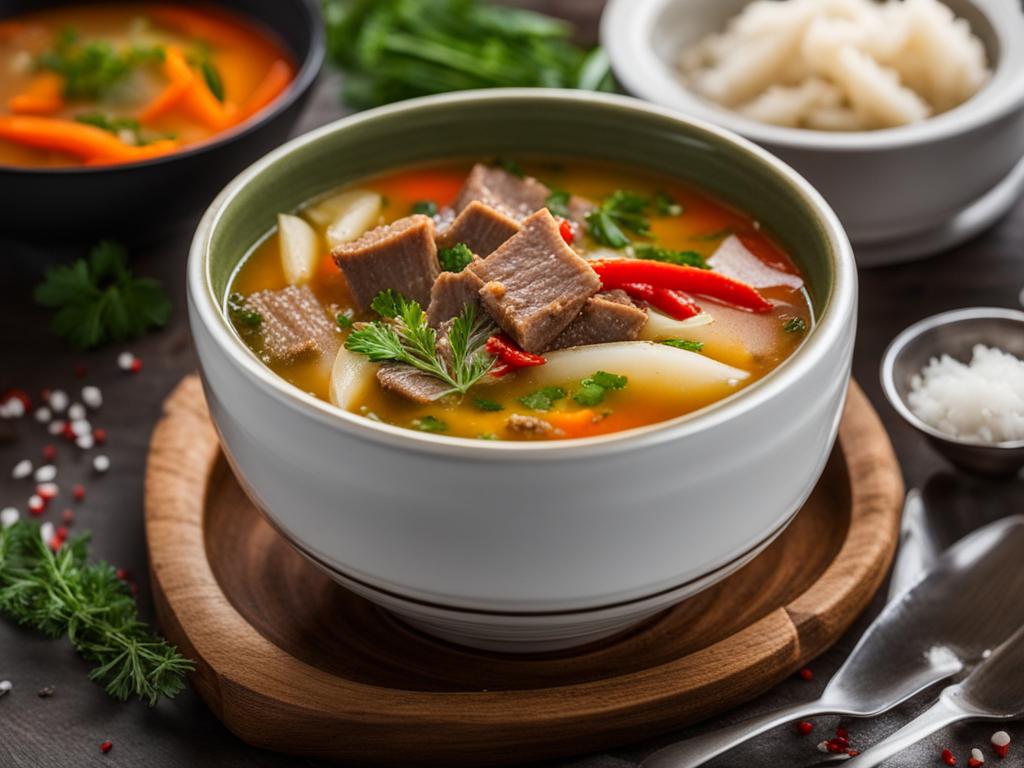
Try one of these beef tripe recipes and discover the unique flavors and textures this ingredient brings to the table. From comforting soups to hearty stews, beef tripe is a versatile ingredient that can elevate any dish. Impress your friends and family with your culinary skills by incorporating beef tripe into your next meal!
Nutritional Value of Beef Tripe
Beef tripe is not only a flavorful meat but also a nutritious addition to your diet. It offers a variety of essential nutrients that support overall health and well-being. Let’s explore the nutritional value of beef tripe:
Calories and Macronutrients
A 5-ounce serving of cooked beef tripe contains approximately 125 calories, making it a relatively low-calorie meat option. It is also low in fat, with only 5 grams per serving. However, beef tripe is packed with protein, providing about 18 grams of protein per serving. Protein is essential for tissue repair, muscle development, and overall growth.
Vitamins and Minerals
Beef tripe is a rich source of various vitamins and minerals that contribute to optimal health. Here are some key nutrients found in beef tripe:
| Nutrient | Amount per Serving |
|---|---|
| Vitamin B12 | Approximately 2.4 micrograms |
| Selenium | Approximately 27 micrograms |
| Zinc | Approximately 1.9 milligrams |
| Calcium | Approximately 50 milligrams |
| Phosphorus | Approximately 175 milligrams |
| Magnesium | Approximately 16 milligrams |
Vitamin B12 is vital for red blood cell production and nerve function, while selenium acts as a powerful antioxidant that supports immune function. Zinc plays a role in immune system health and cell growth, and calcium, phosphorus, and magnesium are essential for maintaining strong bones and teeth.
It’s important to note that the exact nutrient content may vary slightly depending on the cooking method and the specific cut of beef tripe.
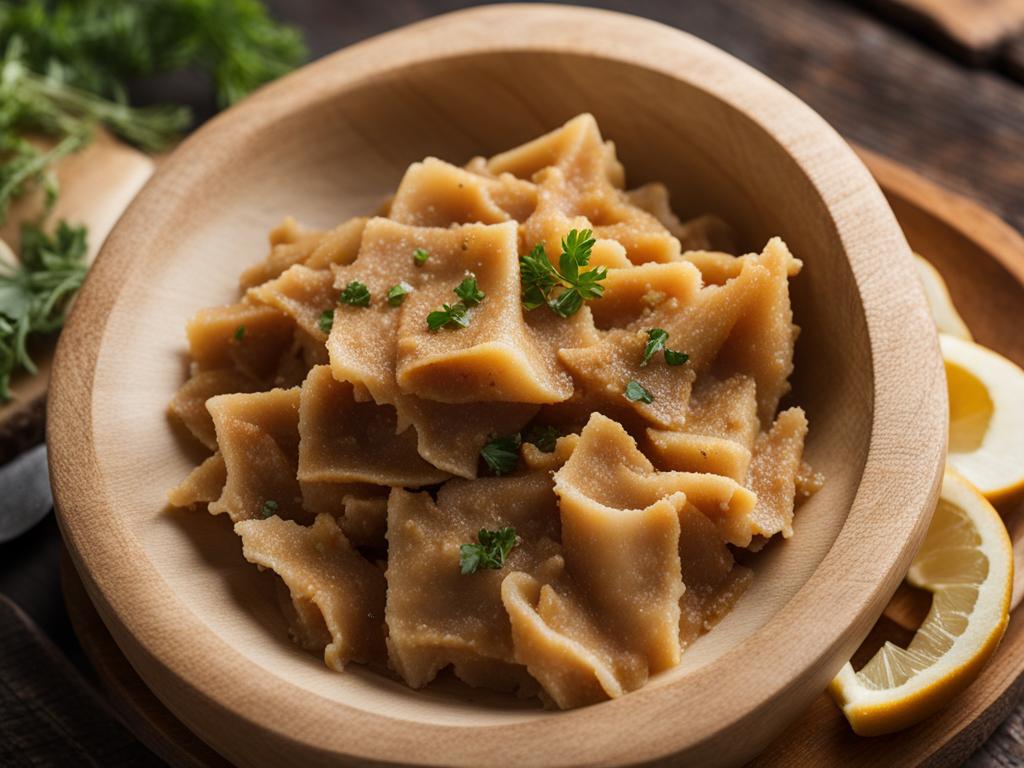
Did You Know? Beef tripe is also a good source of collagen, a protein that supports skin elasticity, joint health, and the health of tendons and ligaments.
Incorporating beef tripe into your diet offers a range of nutritional benefits that can support various aspects of your health. Whether you choose to enjoy it in soups, stews, or other dishes, beef tripe can provide a nourishing addition to your meals.
Potential Risks of Consuming Beef Tripe
While beef tripe offers several health benefits, it is important to be aware of the potential risks associated with its consumption. Understanding these risks can help individuals make informed decisions about their diet and overall health.
High Cholesterol Content
One of the primary risks of beef tripe is its high cholesterol content. Cholesterol is a fatty substance that can contribute to heart disease and other cardiovascular conditions when consumed in excess. Individuals with high cholesterol levels should consume beef tripe in moderation and be mindful of their overall dietary cholesterol intake.
Texture and Suitability
The texture of beef tripe can be tough and chewy, which may not be suitable for individuals with dentures or sensitive teeth. It requires proper cooking techniques to ensure it becomes tender and enjoyable. Additionally, the texture of tripe may not be appealing to everyone, so personal preferences should be taken into consideration.
Choking Hazard
Proper chewing is crucial when consuming beef tripe to avoid the risk of choking. Tripe can be fibrous and require thorough chewing before swallowing. It is essential to take small bites and chew each bite thoroughly to ensure safe consumption.
Overall, while there are risks associated with beef tripe, they can be mitigated by mindful consumption, proper cooking techniques, and considering individual dietary preferences and health conditions.

| Risks of Consuming Beef Tripe | Preventive Measures |
|---|---|
| High cholesterol content | Consume in moderation Avoid high-cholesterol sides |
| Texture and suitability | Proper cooking techniques for tenderness Consider personal preferences |
| Choking hazard | Thoroughly chew each bite Take small bites |
Where to Get Beef Tripe
Looking to buy beef tripe? You’re in luck! Beef tripe is readily available at most grocery stores and specialty butcher shops. Whether you’re planning to whip up a traditional tripe soup or experiment with unique tripe recipes, you’ll be able to find this versatile ingredient at your fingertips.
If convenience is your priority, online shopping offers a hassle-free solution. Reputable sources provide the option to buy beef tripe online, so you can have it delivered straight to your door. With just a few clicks, you’ll be well on your way to preparing delicious tripe dishes in the comfort of your own kitchen.
For those who prefer a more immersive and personalized shopping experience, farmers’ markets are a great option. These vibrant marketplaces often feature local vendors who offer a range of fresh and high-quality meats, including beef tripe. Exploring your local farmers’ market not only supports the community but also ensures the authenticity and quality of the tripe you purchase.
Remember, when selecting beef tripe, it’s crucial to prioritize freshness. Look for tripe that has a clean and odorless appearance, free from any discoloration or signs of spoilage. Proper storage and handling are also essential to maintain the flavor and quality of your beef tripe.
Now that you know where to get beef tripe, you’re ready to embark on a culinary adventure with this unique and nutritious ingredient. Let your creativity run wild and explore the wide range of flavors and textures that beef tripe has to offer.
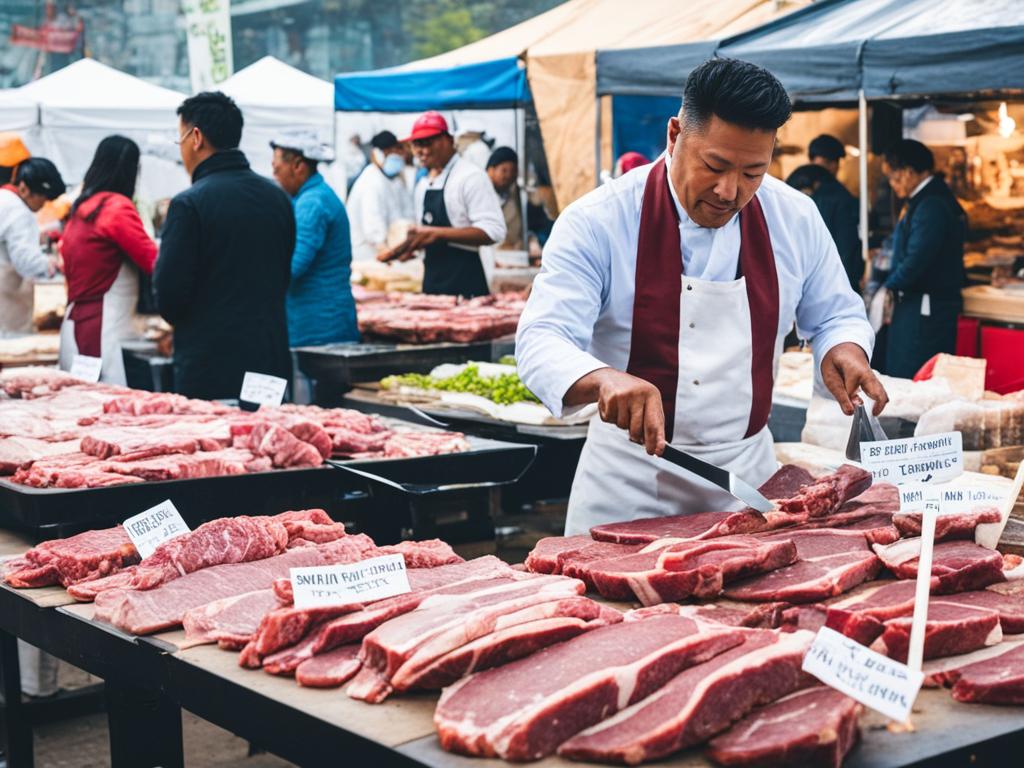
How to Store Beef Tripe
Proper storage of beef tripe is essential to maintain its freshness and quality. Follow these tips to store your beef tripe:
- Keep it sealed: Store beef tripe in a sealed container or wrap it tightly in plastic wrap to prevent air exposure, which can cause spoilage.
- Refrigerate promptly: Place the sealed beef tripe in the refrigerator as soon as possible after purchase. The cool temperature helps slow down bacterial growth and preserves the meat.
- Consume within a few days: To enjoy beef tripe at its best, consume it within a few days of purchase. This ensures optimal freshness and flavor.
- Freezing option: If you don’t plan to use beef tripe immediately, it can be frozen for later use. Proper packaging is crucial to prevent freezer burn and maintain its quality.
- Thawing: When ready to use frozen beef tripe, thaw it in the refrigerator overnight. This gradual thawing method ensures a safe and even thaw, preserving the meat’s texture and flavor.
Tip: Before storing beef tripe, make sure it is properly cleaned and cooked to remove any bacteria or impurities. Following the recommended cleaning and cooking techniques will ensure safe and delicious beef tripe dishes.
| Storage Method | Storage Duration |
|---|---|
| Refrigerator (4°C or below) | Up to 3 days |
| Freezer (-18°C or below) | Up to 3 months |
Tips for Cooking with Beef Tripe
When it comes to cooking with beef tripe, there are a few key tips to keep in mind to ensure the best results. Here are some essential cooking tips for beef tripe:
- Clean the tripe thoroughly: Before cooking, it’s important to clean the beef tripe thoroughly. Start by rinsing it with cold water to remove any excess dirt or debris. Then, soak the tripe in vinegar for about 30 minutes. This will help remove any impurities and bacteria, leaving you with clean tripe that is safe to cook and eat.
- Simmer the tripe for tender results: To achieve tender and flavorful tripe, it’s best to simmer it in water for 2-3 hours. This slow cooking method helps break down the tough fibers and transforms the tripe into a more tender and enjoyable texture.
- Enhance the taste with onions, garlic, and spices: While tripe has a mild flavor on its own, you can elevate its taste by adding onions, garlic, and spices to your cooking. These ingredients will infuse the tripe with delicious flavors and aromas.
- Experiment with different recipes and cooking methods: Beef tripe is a versatile ingredient that can be used in various dishes. Don’t be afraid to try different recipes and cooking methods to discover new and delicious ways to enjoy tripe. Whether you’re adding it to soups, stews, or even salads, there’s no shortage of culinary possibilities.
“Cooking tripe requires patience and attention to detail. By following these cooking tips, you’ll be able to create flavorful dishes that highlight the unique qualities of beef tripe.”
So go ahead, give beef tripe a try in your kitchen and explore the culinary adventures it has to offer. With these cooking tips, you’ll be able to cook tripe properly and enjoy its flavorful and tender results.
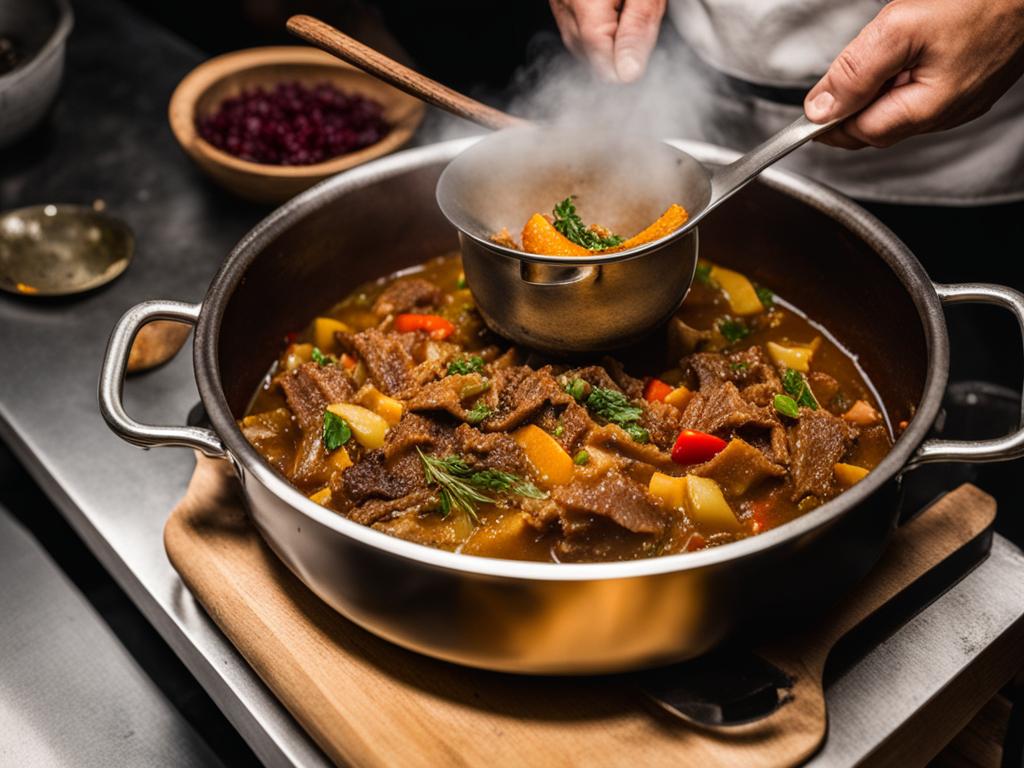
| Cooking Tips for Beef Tripe |
|---|
| Clean the tripe thoroughly |
| Simmer the tripe for tender results |
| Enhance the taste with onions, garlic, and spices |
| Experiment with different recipes and cooking methods |
Beef Tripe in International Cuisines
Beef tripe is a beloved ingredient in many international cuisines, where it is used to create a variety of flavorful and unique dishes. Its versatility allows it to be incorporated into traditional recipes from different culinary traditions, adding a distinct texture and taste to the dish.
In Mexican cuisine, one popular dish made with beef tripe is “menudo.” This hearty soup is often enjoyed as a breakfast or lunch option and is made with a delicious broth, tender beef tripe, hominy, and various spices. Menudo is a staple during festive occasions and is enjoyed for its rich flavors and comforting qualities.
Italian cuisine also showcases the culinary potential of beef tripe with a dish called “trippa alla romana.” This traditional Roman specialty consists of slowly cooked beef tripe in a flavorful tomato-based sauce, infused with garlic, onions, and aromatic herbs. It is a beloved dish that highlights the hearty and robust flavors of beef tripe in Italian cooking.
In Dominican cuisine, “mondongo soup” is a popular dish that features beef tripe as a key ingredient. This hearty soup combines tender beef tripe with a medley of vegetables, such as carrots, bell peppers, and celery. The soup is seasoned with garlic, oregano, and other spices, creating a flavorful and comforting meal that is enjoyed by many.
Exploring the international cuisines that incorporate beef tripe can offer inspiration and new flavors to your own cooking repertoire. By embracing these culinary traditions, you can discover the diverse ways in which beef tripe is prepared and savor the unique taste experiences it provides.
Benefits of Exploring International Cuisines:
- Discover new flavors and taste experiences
- Expand your culinary skills and knowledge
- Embrace diverse cultural traditions
- Broaden your palate and appreciation for different ingredients
- Create unique and memorable dining experiences
Conclusion
Beef tripe is a remarkable meat that offers numerous benefits for your health and culinary adventures. It is packed with essential nutrients, including protein, vitamins, and minerals, which are crucial for supporting various bodily functions. Incorporating beef tripe into your diet can contribute to strong bones, muscle development, and a robust immune system.
To fully enjoy the flavors and textures of beef tripe, it is important to follow proper cooking techniques. Thoroughly cleaning the tripe and simmering it for a few hours will result in tender and flavorful dishes. By adding your favorite spices, onions, and garlic, you can elevate the taste of beef tripe and create delightful culinary creations.
Introducing beef tripe to your meal repertoire allows you to explore new flavors and diversify your culinary experiences. Whether it’s in hearty stews, comforting soups, or creative sausages, beef tripe adds a unique richness and depth to your dishes. With its nutritional value and culinary versatility, beef tripe is a delightful addition to any meal.
In conclusion, beef tripe offers a range of benefits, from its nutritional content to its potential in enhancing your cooking skills. So, don’t hesitate to embrace this fascinating ingredient and start enjoying the perks of beef tripe in your culinary journey!
Also Read : Perfect Roast Beef Sandwich Recipes & Tips
FAQ
Q: What does beef tripe taste like?
A: Beef tripe has a unique flavor that is mildly sweet and earthy, with a slightly chewy texture. Some compare the taste to a milder version of beef, while others liken it to a cross between pork and chicken.
Q: How can I prepare beef tripe for cooking?
A: To prepare beef tripe for cooking, it needs to be thoroughly cleaned. Start by rinsing it under cold water and then soaking it in a solution of water and vinegar or lemon juice to help remove any remaining impurities. After soaking, it should be scrubbed and rinsed again before being ready for use in your chosen recipe.
Q: What is honeycomb tripe and how is it different from other types of tripe?
A: Honeycomb tripe is a type of beef tripe that is known for its unique textured surface, resembling a honeycomb or net. It comes from the second stomach chamber of a cow and is often used in various cuisines, particularly in Latin American and Mexican dishes.
Q: What are the taste and texture of beef tripe?
A: Beef tripe offers a combination of mild sweetness and earthy flavors, along with a slightly chewy and rubbery texture. When cooked properly, it can become tender and take on the flavors of the dish it’s prepared in.
Q: Are there traditional ways of cooking beef tripe?
A: Yes, beef tripe has been used in traditional recipes across various countries and cultures. It is often used to make soups, stews, and curries, where it is cooked slowly to develop deep flavors and tenderize the tripe.
Q: How does modern cooking incorporate beef tripe?
A: In modern cuisine, beef tripe is often used in innovative ways, such as in tacos, stir-fries, and even added to salads for a unique texture and flavor. Creative recipe developers have been incorporating beef tripe into diverse dishes to introduce it to a wider audience.
Q: What does fried beef tripe taste like?
A: Fried beef tripe has a crispy exterior and a tender interior. It takes on a rich, savory flavor with a hint of sweetness, making it a popular dish in many cuisines around the world.
Q: Why does beef tripe need to be cleaned thoroughly before cooking?
A: Beef tripe comes from the second stomach chamber of a cow and may need thorough cleaning to remove any natural odors or impurities. This ensures that when cooked, the tripe has a pleasant taste and aroma.
Q: What are some tips for cooking beef tripe?
A: When preparing beef tripe, using a medium to sharp knife can make it easier to trim and clean any remaining fat or membrane from the surface. It’s also important to cook it gently, either through slow simmering or braising, to tenderize the tripe and develop its flavors.
Q: Where does beef tripe come from?
A: Beef tripe comes from the second stomach chamber of cows and is considered an organ meat. It is widely used in various cuisines and can be found in dishes across different countries and cultures.


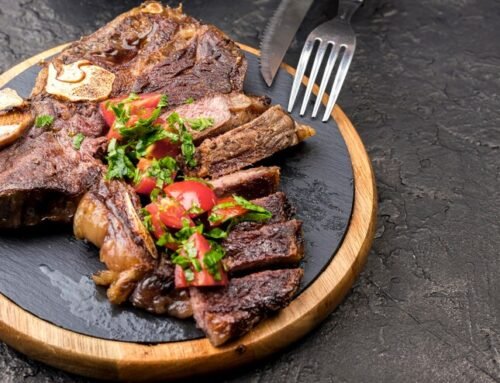
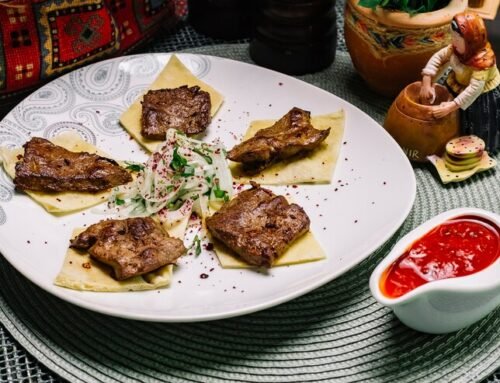

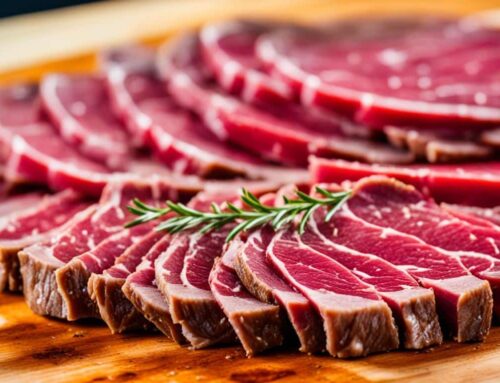
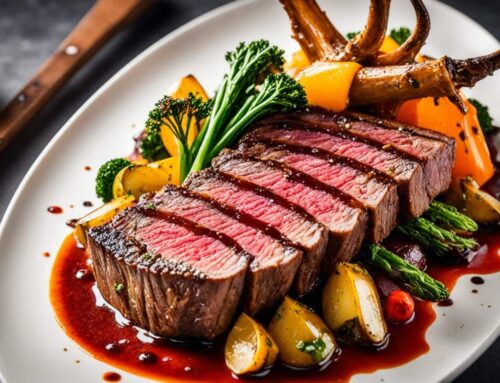
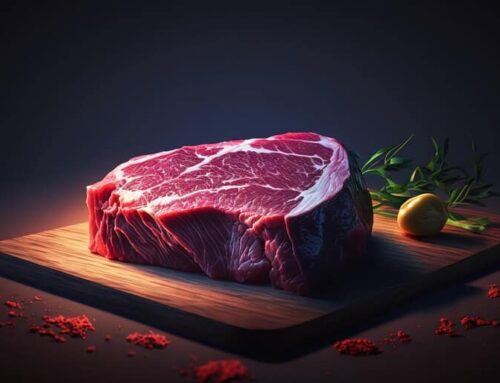
Leave A Comment